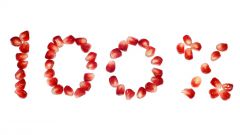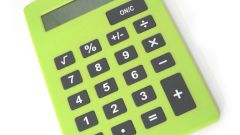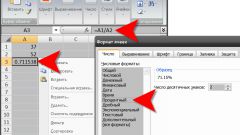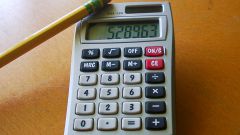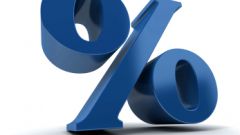You will need
- calculator
Instruction
1
To convert a percent into fraction, it is necessary first to clarify: in what proportion you want to translate them. In tens, tenth, fifth, third, etc.
For example, interest needs to be translated into n-wide share. To do this, use the following formula:KD = K% x n / 100, where:KD – the number of shares
To% - the percentage
n is the "size" of the shares (for the third n=3, for tenths – n=10, etc.).
For example, interest needs to be translated into n-wide share. To do this, use the following formula:KD = K% x n / 100, where:KD – the number of shares
To% - the percentage
n is the "size" of the shares (for the third n=3, for tenths – n=10, etc.).
2
For example, suppose it is known that the concentration of the solution is 2%. Required: what will be the concentration of this solution in thousandths ( ‰ ).
Using the above formula we get 2 x 1000 / 100 = 20. That is, the concentration of 2% solution, expressed in thousandths is equal to 20.
Using the above formula we get 2 x 1000 / 100 = 20. That is, the concentration of 2% solution, expressed in thousandths is equal to 20.
3
However, in practice, to clarify in what proportion it is necessary to translate the interest is often difficult. In this case, choose the most appropriate in this situation share. This should take into account also the amount of interest in each case. Such situations are better dealt with in typical examples.
4
For example, suppose a shareholder owns 20% stake in the company. You want to find out what share of the company he owns.
So 20% is 20/100, then reducing this fraction, we get 1/5. That is, in this case, based on the subject matter and the amount of interest, the answer will be: "Fifth share."
So 20% is 20/100, then reducing this fraction, we get 1/5. That is, in this case, based on the subject matter and the amount of interest, the answer will be: "Fifth share."
5
If the shareholder has purchased 51% of the shares, to reduce the amount of interest will not succeed. So (theoretically) the most appropriate answer to the above question is "Fifty-one hundredth of a share".
However, in this situation, the answer is not quite appropriate. More informative would be to decompose 51/100 amount: 50/100 + 1/100 = 1/2 + 1/100. Thus, the correct answer is "Half and one hundredth".
However, in this situation, the answer is not quite appropriate. More informative would be to decompose 51/100 amount: 50/100 + 1/100 = 1/2 + 1/100. Thus, the correct answer is "Half and one hundredth".
6
If you receive acceptable shares of the impossible, and the accuracy of calculations is not critical, then slightly adjust the amount of interest.
For example, it is known that 77% of employees and family. The question is: what proportion of the total number of employees are family workers.
As 77/100 cannot be reduced, you will find a more appropriate numerator. Is - 75. 75/100=3/4. Therefore, the correct (in this case) the answer will be: "More than three-quarters" or "Three out of four".
For example, it is known that 77% of employees and family. The question is: what proportion of the total number of employees are family workers.
As 77/100 cannot be reduced, you will find a more appropriate numerator. Is - 75. 75/100=3/4. Therefore, the correct (in this case) the answer will be: "More than three-quarters" or "Three out of four".

